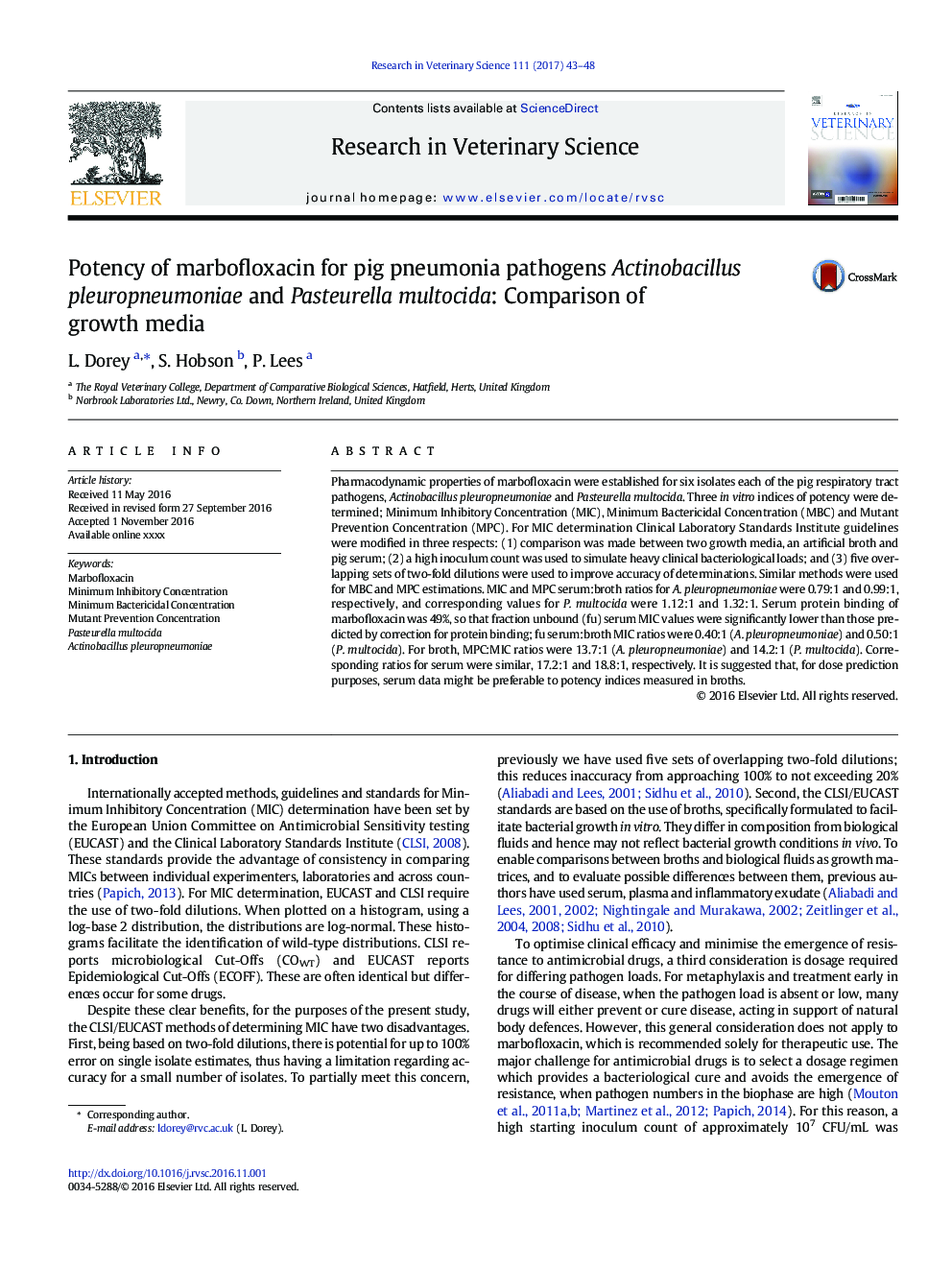| Article ID | Journal | Published Year | Pages | File Type |
|---|---|---|---|---|
| 5544026 | Research in Veterinary Science | 2017 | 6 Pages |
Abstract
Pharmacodynamic properties of marbofloxacin were established for six isolates each of the pig respiratory tract pathogens, Actinobacillus pleuropneumoniae and Pasteurella multocida. Three in vitro indices of potency were determined; Minimum Inhibitory Concentration (MIC), Minimum Bactericidal Concentration (MBC) and Mutant Prevention Concentration (MPC). For MIC determination Clinical Laboratory Standards Institute guidelines were modified in three respects: (1) comparison was made between two growth media, an artificial broth and pig serum; (2) a high inoculum count was used to simulate heavy clinical bacteriological loads; and (3) five overlapping sets of two-fold dilutions were used to improve accuracy of determinations. Similar methods were used for MBC and MPC estimations. MIC and MPC serum:broth ratios for A. pleuropneumoniae were 0.79:1 and 0.99:1, respectively, and corresponding values for P. multocida were 1.12:1 and 1.32:1. Serum protein binding of marbofloxacin was 49%, so that fraction unbound (fu) serum MIC values were significantly lower than those predicted by correction for protein binding; fu serum:broth MIC ratios were 0.40:1 (A. pleuropneumoniae) and 0.50:1 (P. multocida). For broth, MPC:MIC ratios were 13.7:1 (A. pleuropneumoniae) and 14.2:1 (P. multocida). Corresponding ratios for serum were similar, 17.2:1 and 18.8:1, respectively. It is suggested that, for dose prediction purposes, serum data might be preferable to potency indices measured in broths.
Keywords
Related Topics
Life Sciences
Agricultural and Biological Sciences
Animal Science and Zoology
Authors
L. Dorey, S. Hobson, P. Lees,
